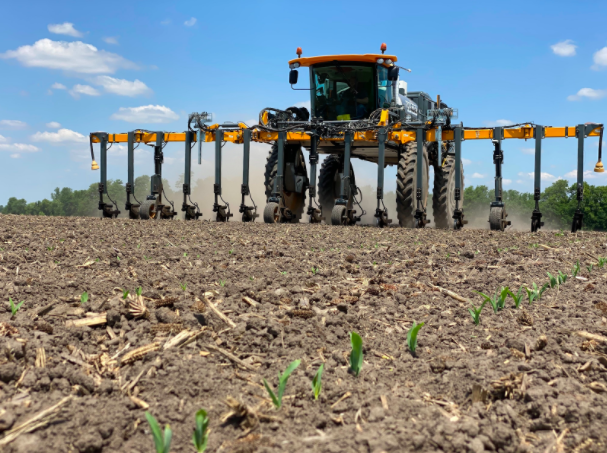A Bountiful Education: Crowning Our Fantasy Farming Winner
Climate LLC (Climate) started in Silicon Valley, but it’s not just our digital platform and the customers we serve who are spread around the world - so are our teams.
Within our Science organization we operate several research farms in the Midwestern U.S., an area that’s hitched tight to agriculture, like a header to a combine. Our Climate Research Farms are crucial to the development of new capabilities and to proving out ones already in production, and present a real opportunity for our colleagues around the world to develop their practical farm operation knowledge.
We started thinking late last year about ways we could engage our global teams to bring us all closer to the farm. We talk a lot at Climate about the decisions farmers make through the year that can influence their profitability and the productivity of their acres.

How fortuitous that we had decided in January, before the global coronavirus pandemic began, to launch a Fantasy Farming program for our Science organization this year.
What better way to expose our employees to real farm decisions than by pitting them against each other in a friendly competition? This need for farm exposure and education was the birth of our Fantasy Farming program, which ran concurrently with our growing season this year.
Materials and Methods
Not all our research farm acres are dedicated to pilots and new developments each year. This season, on our Springfield, Ill. farm, we had a plot perfectly sized to accommodate roughly ten planted passes of corn that would become our competition.
Each of four teams were randomly assigned two passes within this field, for a total of roughly two acres per team. This would make sure no one team was biased to a part of the field that would yield higher than others. These teams were complemented by rows that we dedicated to a future regime with a variety that hasn’t been commercialized yet, as well as a grower-standard set of decisions.

Decisions, Decisions
One of the cornerstones of the Climate FieldViewTM platform is that we’re trying to streamline the complicated decision-making process for growers. The same concept holds true for Fantasy Farming - we narrowed their selections down to a handful of the most yield- and profit-impacting decisions farmers have to make, for which FieldView can help measure the outcome and make decision making easier.
All teams opted for a conventional-tillage approach, and agreed to engage our research farm teams in disease scouting, rather than adopting a fungicide application on the field before knowing what corn disease pressure would result this year.
Our teams differed pretty greatly, though, when it came to the corn variety, or hybrid, that they selected, the density with which that hybrid was planted, and the amount of fertilizer applied to the field at certain growth stages.
Each team selected a different hybrid to plant, all of which are known by agronomists to demonstrate certain resistance to diseases, adaptability to certain soil types, and other qualities that differentiate them and drive yield. Our teams also adopted a wide variety of fertilizer application strategies, some applying before planting, and some applying during growth to give plants an in-season boost.
Outcomes
We had two key learnings to note coming out of harvest, both of which confirmed key hypotheses: one for overall yield and one for profitability.
The first insight was on seed selection and our placement model accuracy. When teams selected the hybrid they’d plant on their passes, they did so with an understanding of the hybrid profile, but without knowing what Climate FieldView recommendations would be. The models we use to help inform field-level seed placement did reflect reality, though, accurately identifying the two hybrids that would yield highest.
Second, the top-performing hybrid yielded 17 bushels per acre higher than the number two slot, edging it out at 219 vs 202 bushels per acre. This highest-yielding team didn’t win the competition, due to added expense of a higher-density population, an additional in-season fertilizer application, and higher overall fertilizer use.
The team invested nearly a hundred dollars more in their on-farm inputs, proving that more inputs can lead to higher yield, but when we prioritize optimizing profitability over maximized yields, farmers win.

Who wins bragging rights in our teams is less important ultimately than what we learned from the process. This competition proved a great way to connect our teams in ways they wouldn’t normally, which has been especially important in a difficult, distant year. And though we might have wanted to give them some real on-the-farm experience - like, say, making them scout their own fields for disease development - energizing them with videos, updates, and discussion through the growing season proved really educational.
We can’t wait to pit our teams against each other again next year.



